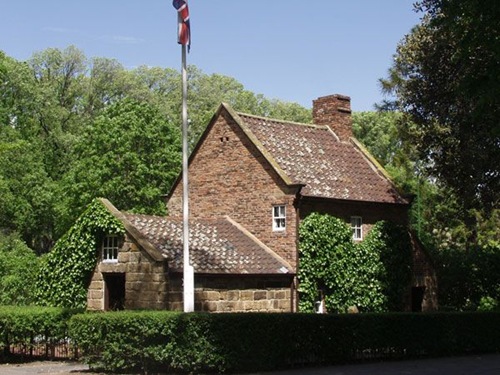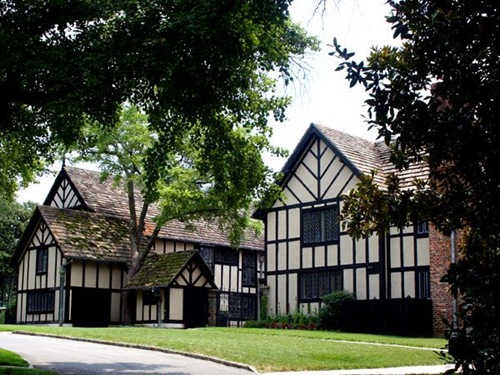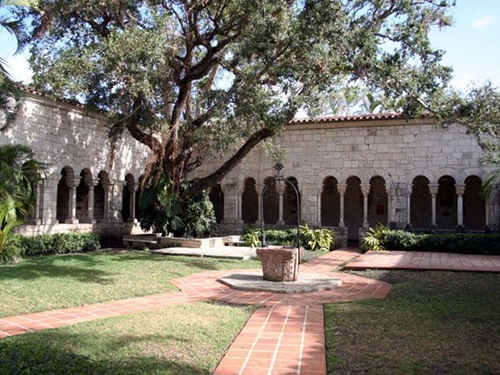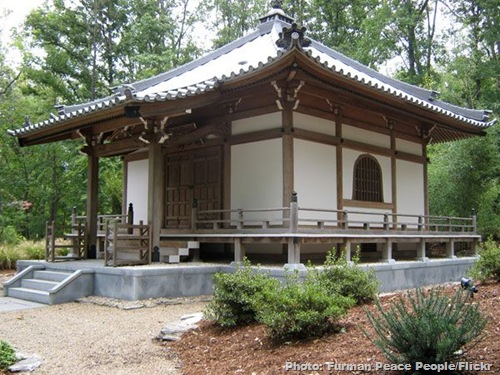
5 Historic Buildings That Moved Overseas
By Kathryn Doyle, Popular Mechanics, 4 December 2012.
By Kathryn Doyle, Popular Mechanics, 4 December 2012.
These bridges, cottages, and churches all needed to file a change-of-address form.
1. Cook's Cottage
Captain James Cook, the famous explorer, navigator, and cartographer who spent 12 years mapping the Pacific, was a hero of England. So why does his family's humble cottage now stand in Melbourne, Australia?
Cook's parents built the brick house in Great Ayton, North Yorkshire, in 1755. In 1933 the woman in possession of the cottage decided to sell it, on the condition that it remain in England. However, for an ad for the sale that appeared in the Melbourne Herald, a persuasive Australian businessman named Russell Grimwade convinced her to change “England" to “the British Empire," a term that included Australia.
Grimwade then bought the cottage for £800 and donated it to the town of Victoria, where Cook had made his first Australian landfall. Dissembled bricks were packed into more than 200 cases and barrels, along with sprigs of ivy from the walls to be replanted at the new site - Fitzroy Gardens in Melbourne.
Was the effort worth it? Historians aren't even sure Captain Cook ever lived in the cottage.
2. Agecroft Hall
Another British expat, Agecroft Hall was (is) a Tudor manor house built in Lancashire in the late 15th century. The house was a distinguished landmark on the English countryside for hundreds of years, but the post–Industrial Revolution era wasn't so kind to the building. By 1925 Agecroft had fallen into disrepair, and it was purchased by Thomas C. Williams Jr., a tobacco, banking, and shipping heir from Richmond, Virginia [USA]. There were protests in Great Britain, but eventually the House of Commons let the sale go through, and the manor was dissembled, packed, and shipped across the Atlantic. Reportedly every pane of stained glass survived the trip. It now stands on the James River in Richmond and has become a museum.
3. St. Bernard de Clairvaux Church
St. Bernard de Clairvaux Church, a medieval monastic cloister, was completed in 1141 in Segovia, Spain. William Randolph Hearst (namesake of PopMech's parent company) bought the monastery as part of a long-time dream to bring one to America. Crews dismantled St. Bernard de Clairvaux and shipped it in 11,000 crates. But during the trip the bottom fell out of Hearst's financial plans, and the crates only made it as far as New York. They sat in a warehouse in Brooklyn until 1952, when Raymond Moss and William Edgemon purchased them. The cloisters eventually found their way to Miami Beach, Florida [USA] (why not?), where they were rebuilt as an Episcopal church that enjoys a healthy flow of tourists. (Hearst tried the Spanish monastery thing again in 1931 with Santa Maria de Ovila, but those boxes only made it to San Francisco before they were abandoned and their contents scattered throughout California in various structures.)
4. John Rennie's London Bridge
The London Bridge has actually been several different bridges throughout history, since the bridge had to be replaced every few hundred years. One of the London bridges is now in Lake Havasu City, Arizona [USA], of all places.
When London needed a new bridge in the early 1800s, Scottish engineer John Rennie the Elder won a design competition. His new bridge was opened across the Thames in 1831. It was so heavily used that it sank 2.5 cm (about an inch) every 8 years. By 1924 it had to be replaced again.
The Common Council of the City of London put the bridge up for sale in 1967. Robert P. McCullough of McCullough Oil bought the bridge for $2,460,000 and had it reconstructed in Arizona in 1971.
5. The Place of Peace
Greenville, South Carolina [USA], might not be where you'd go looking for a Buddhist temple. But a temple built in Nagoya, Japan, in 1984 found its way over in 2008. Donated to Furman University by the Tsuzuki family, the Hei-Sei-Ji temple was dismantled into 2400 pieces, shipped through the Panama Canal, and reassembled on the college campus as an educational tool for the Asian Studies department. Luckily for Furman, the temple had never been assigned a priest in Japan. If it had, it could never have been removed from the country.





No comments:
Post a Comment
Please adhere to proper blog etiquette when posting your comments. This blog owner will exercise his absolution discretion in allowing or rejecting any comments that are deemed seditious, defamatory, libelous, racist, vulgar, insulting, and other remarks that exhibit similar characteristics. If you insist on using anonymous comments, please write your name or other IDs at the end of your message.